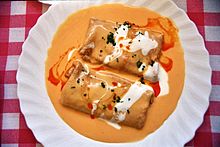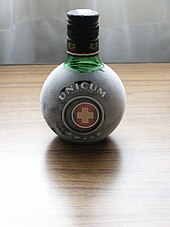Culture of Hungary
The rich culture of Hungary is strong in folk traditions and has its own distinctive style, influenced by the various ethnic groups including the Roma people. Music of all kinds, from classical to folk, is an important part of everyday life, as is the country's rich literary heritage.
The culture of Hungary varies across Hungary, ranging from the capital city of Budapest on the Danube, to the Great Plains bordering Ukraine. Hungary has a rich folk crafts tradition, including for example embroidery, decorated pottery and carvings. Hungarian music ranges from the rhapsodies of Franz Liszt and folk music to modern songs influenced by folk music and Roma music. Hungary has a rich and colorful literature with many poets and writers, although not many are known abroad due to the limited prevalence of the Hungarian language. Noted authors include Sándor Márai and Imre Kertész, who have been gaining acclaim in recent decades. János Kodolányi was well known in Italy and Finland in the mid-20th century. Imre Kertész won the Nobel Prize in Literature in 2002. Péter Esterházy is popular in Austria and Germany, and Magda Szabó has recently become well known in Europe as well.
Famous Hungarians in the film industry
Hollywood
Cinematographers László Kovacs ASC, Andrew László ASC. Andrew Marton directed the chariot race in Ben-Hur for which he won a Golden Globe. Joe Eszterhas wrote Basic Instinct and became the highest-paid writer in Hollywood history. He also wrote the Berlin Golden Bear winner "Music Box" and the first Hungarian "blockbuster", Children of Glory. Zoltan Elek won AA-award (1986) for make-up. Actors of Hungarian origin are Peter Lorre, Paul Newman (10 AA nominations: 59, 62, 64, 68-69, 82-83, 86-87, 95, 99 and 2003)/one win 87 plus one honorary award 86 and 99 win), Tony Curtis (1 AA nomination), Johnny Weissmüller (Tarzan) and Béla Lugosi (Dracula), Franciska Gaal, Ilona Massey, Zsa Zsa Gabor. Hedy Lamarr was half-Hungarian as was Ali MacGraw nominated (71) (Love story), Adrien Brody (1 AA), Goldie Hawn (1 AA), Marton Csokas and Isabelle Huppert one nom 2017.
Hungarian cuisine

A nicely prepared Hortobágyi palacsinta, served in Sopron

A slice from the Dobos Cake
Traditional dishes such as the world-famous Goulash (gulyás stew or gulyásleves soup) are popular. Dishes are often flavoured with paprika (ground red peppers), a Hungarian innovation.[10] Thick, heavy Hungarian sour cream called tejföl is often used to soften the dish's flavour. The famous Hungarian hot river fish soup called Fisherman's soup or halászlé is usually a rich mixture of several kinds of poached fish.
Other dishes include chicken paprikash, foie gras made of goose liver, pörkölt stew, vadas (game stew with vegetable gravy and dumplings), trout with almonds or salty and sweet dumplings, and túrós csusza, (dumplings with fresh quark cheese and thick sour cream). Desserts include the iconic Dobos Cake, Strudel (rétes), filled with apple, cherry, poppy seeds or cheese, Gundel pancake, plum dumplings (szilvás gombóc), somlói dumplings, dessert soups like chilled sour cherry soup, and sweet chestnut puree (gesztenyepüré) (cooked chestnuts mashed with sugar and rum, split into crumbs, and topped with whipped cream). Perec and kifli are widely popular pastries.
The csárda is the most distinctive type of Hungarian inn, an old-style tavern offering traditional cuisine and beverages. Borozó usually denotes a cozy old-fashioned wine tavern, pince is a beer or wine cellar, and a söröző is a pub offering draught beer and sometimes meals. The bisztró is an inexpensive restaurant often with self-service. The büfé is the cheapest place, although one may have to eat standing at a counter. Pastries, cake, and coffee are served at a cukrászda, while an eszpresszó is a cafeteria.
Alcoholic beverages

A cold bottle of Unicum
Pálinka: Pálinka is a fruit brandy, distilled from fruit grown in the orchards of the Great Hungarian Plain. It is a spirit native to Hungary, and comes in a variety of flavours including apricot (barack) and cherry (cseresznye). However, plum (szilva) is the most common flavour. Though many flavours are available,, pálinka made of strawberries or walnut are considered to be a rare and expensive delicacy; variations also include pálinka sweetened with honey or fruit beds under the liquid.
Beer: Beer goes well with many traditional Hungarian dishes. The five main Hungarian breweries are Borsodi, Soproni, Arany Ászok, Kőbányai, and Dreher.
Wine: As Hugh Johnson says in The History of Wine, the territory of Hungary is ideal for wine-making. Since the fall of communism, there has been a renaissance of Hungarian wine-making. The choice of good wine is widening from year to year. The country can be divided to six wine regions, which include North-Transdanubia, Lake Balaton, South Pannonia, Duna-region or Alföld, Upper Hungary and Tokaj-Hegyalja. Hungarian wine regions offer a great variety of style, of which the main products of the country are elegant and full-bodied dry whites with good acidity, although complex sweet whites (Tokaj), elegant (Eger) and full-bodied robust reds (Villány and Szekszárd). The main varieties are Olaszrizling, Hárslevelű, Furmint, Pinot gris or Szürkebarát, Chardonnay (whites), Kékfrankos (or Blaufrankisch in German), Kadarka, Portugieser, Zweigelt, Cabernet sauvignon, Cabernet franc, and Merlot. The most famous wines from Hungary are Tokaji Aszú and Egri Bikavér.
Tokaji: Tokaji, meaning "of/from Tokaj", is used to label wines from the wine region of Tokaj-Hegyalja. Tokaji wine has received accolades from numerous great writers and composers including Beethoven, Liszt, Schubert, and Goethe; Joseph Haydn's favorite wine was a Tokaji. Louis XV and Frederick the Great tried to outdo one another in the excellence of the vintages they stocked, when they treated guests like Voltaire to some Tokaji. Napoleon III, the last Emperor of the French, ordered 30–40 barrels of Tokaji for the Court every year.[citation needed] Gustav III, King of Sweden, never had any other wine to drink.[citation needed] In Russia, customers included Peter the Great and Empress Elizabeth of Russia.
Zwack Unicum: For over 150 years, a blend of 40 Hungarian herbs has been used to create the liqueur Unicum. Unicum is a bitter, dark-coloured liqueur that can be drunk as an apéritif or after a meal; it is claimed that this helps the digestion. The recipe is held secret by the Zwack family.
Spa culture
Hungary is a land of thermal water. A passion for spa culture and Hungarian history have been connected from the very beginning.[citation needed] It has been shown that Hungarian spa culture is multicultural. The basis of this claim is architecture: Hungarian spas feature Roman, Greek, Turkish, and northern country architectural elements.[citation needed] Due to an advantageous geographical location, thermal water can be found with good quality and in great quantities on over 80% of Hungary's territory.
The Romans heralded the first age of the spa in Hungary; remains of their bath complexes are still to be seen in Óbuda. The spa culture was revived during the Turkish Invasion; the Turks used the thermal springs of Buda for the construction of a number of bathhouses, some of which are still functioning (such as Király Baths and Rudas Baths). In the 19th century, advances in deep drilling and medical science provided the springboard for a further leap in bathing culture. Grand spas such as Gellért Baths, Lukács Baths, Margaret Island, and Széchenyi Medicinal Bath are a reflection of this resurgence in popularity. About 1,500 thermal springs can be found in Hungary. About half of these are used for bathing.
The spa culture has a history of nearly 2,000 years in Budapest. Budapest has the richest supply of thermal water among the capitals of the world.[citation needed] There are about 450 public baths in Hungary. Nowadays the trend shows that bath operators are modernizing their facilities and expanding the services offered. A total of 50 of the 160[Inconsistent with the figure of 450] public baths are qualified as spas throughout the country. Services are offered for healing purposes. These spas provide every type of balneal and physical therapy.